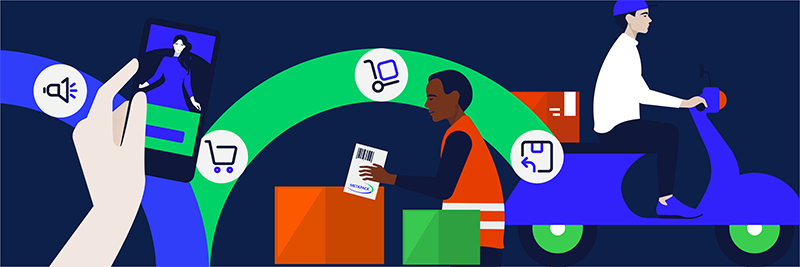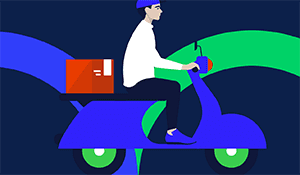
Last year the media was brimming with success stories of ecommerce growth. You’d be forgiven for thinking 2020 was a profitable year for any retailer with an online presence. And yet, that wasn’t the case. As in virtually every sector, many ecommerce SMEs had a hard 2020, and many are potentially staring down the barrel of an even harder 2021. McKinsey reported that in the UK, around 80% of SMEs have seen a revenue impact as a result of the COVID-19 crisis.
Online competition throws spotlight on fulfillment experience for SME retailers
In some cases, Black Friday orders were up more than 60% on the same period in 2019. But the trouble for SMEs is that this growth has only acted to increase competition, and led to higher customer expectations. What’s more, as consumer spending is predicted to tighten coming into 2021, winning and retaining customers will become all the more challenging.
The journey between clicking send and receiving your order is quickly becoming the most important differentiator for online retailers. It includes features like delivery options at checkout, tracking capabilities and returns processes. Smaller players struggle to keep up with ecommerce giants, who find it easier to provide more compelling experiences in these areas thanks to more attractive economies of scale.
Fast-track your delivery experience
It used to be that only the biggest retailers could provide the kind of fulfillment experiences that customers crave. Nowadays even the smallest players know they must invest in this area, and they’re getting creative about how they do it. Rather than wasting resources building up their own networks to offer customers greater delivery choice, savvy SMEs are engaging third-party suppliers with ready-made carrier networks they can tap into in a more cost-effective manner.
Other key drivers of growth
According to the Growth 2000 report, which benchmarks the retailcraft of the largest 2000 retailers in the UK outside of the Top500, there are four main drivers of ecommerce growth: easy and convenient delivery, but also traffic, the shift to mobile shopping, and engaging and paying via social media.
If retailers can’t oblige their customers in all of these areas, the repercussions are unavoidable: customers will simply take their business elsewhere.
For SMEs, 2021 can go one of two ways: it will either be the year they take their business to new heights, or else the year they crumble to the competition. It’s those fast-tracking the delivery experience that will capitalize on the many opportunities to grow.
Find out more about the four main drivers of SME retail growth by reading the RetailX Growth 2000 Report.
